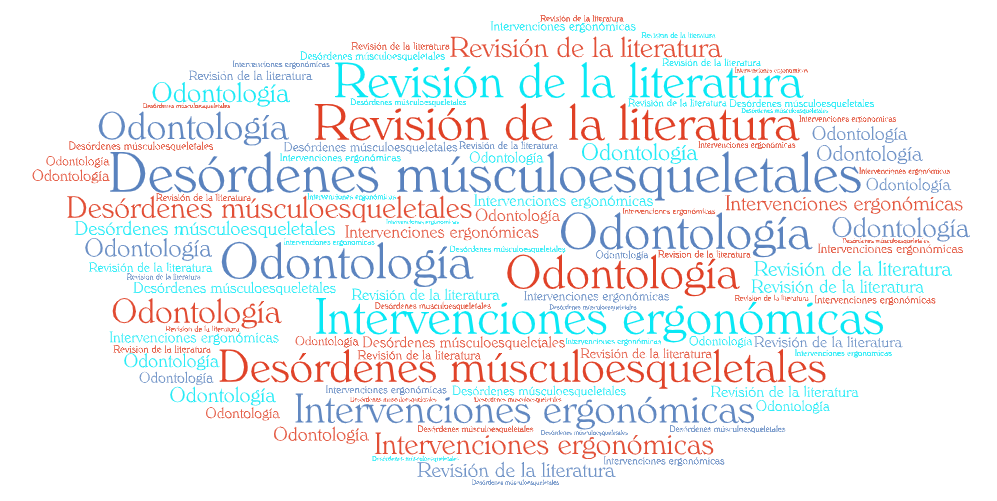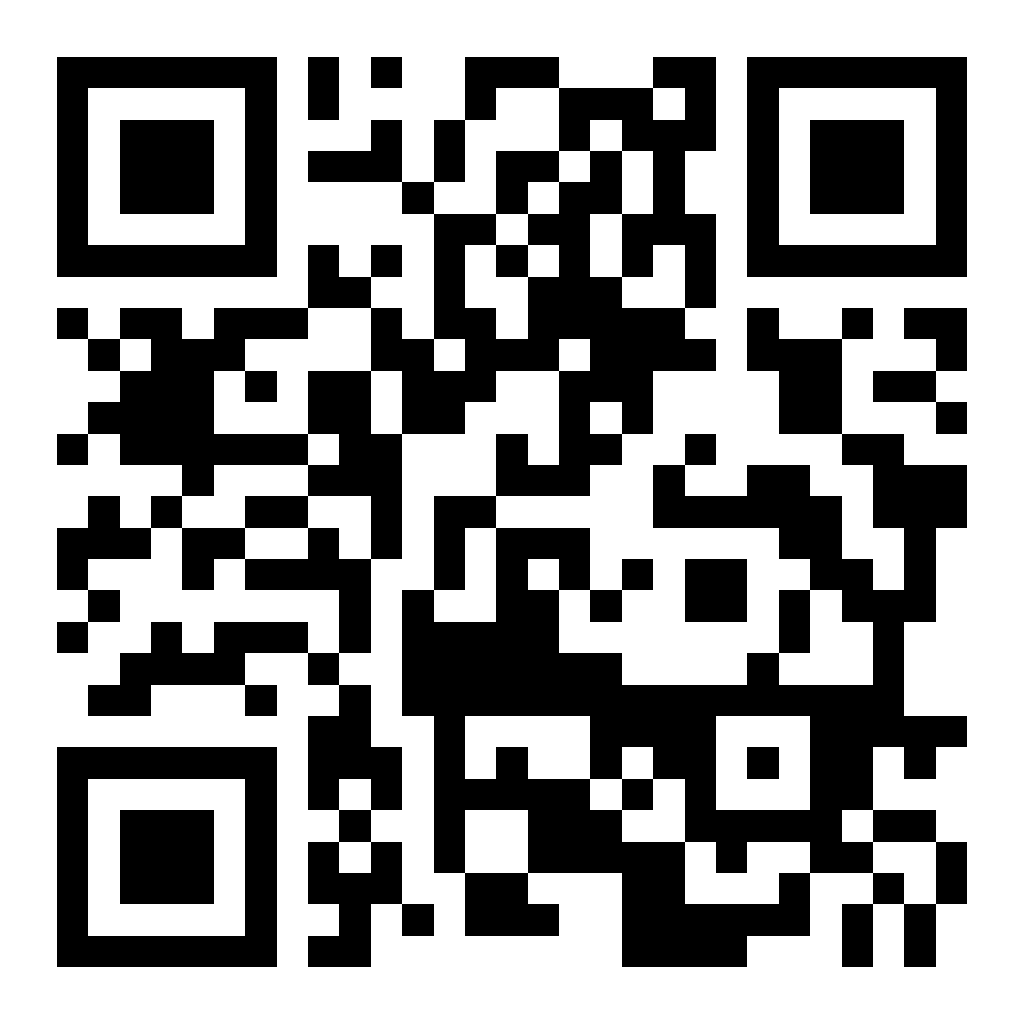Intervenções ergonômicas e seu impacto sobre a profissão odontológica.
DOI:
https://doi.org/10.35954/SM2022.41.2.5.e403Palavras-chave:
Distúrbios Musculoesqueléticos, Ergonomia, Intervenções ergonômicas, Odontologia, PosturaResumo
Introdução: os distúrbios músculo-esqueléticos são altamente prevalentes na população em geral e, em particular, na área da saúde, os profissionais da odontologia representam uma população altamente vulnerável, devido às características particulares do exercício de sua profissão. O estudo de diferentes intervenções ergonômicas e o impacto que elas podem ter na redução dos sintomas musculares e no desenvolvimento e/ou perpetuação dessas condições disfuncionais está crescendo.
Materiais e métodos: foi realizada uma revisão narrativa entre abril de 2022 e agosto de 2022. Bases de dados como MedLine/PubMed e Scielo foram consultadas, incluindo artigos publicados nos últimos dez anos.
Resultados: foram obtidos um total de 71 artigos, dos quais 30 foram excluídos, resultando em 41 artigos incluídos nesta síntese qualitativa.
Conclusões: as intervenções ergonômicas visam basicamente a mudanças nos ambientes de trabalho dos profissionais e/ou a implementação de programas que visam instruir e conscientizar os profissionais sobre critérios ergonômicos para sua incorporação em seu trabalho. Ambas as abordagens intervencionistas foram avaliadas com ferramentas validadas de autopercepção, exames clínicos e avaliações instrumentais. As estratégias que visam o problema no local de trabalho e aquelas que incluem educação e treinamento em ergonomia reduzem o impacto dos distúrbios músculo-esqueléticos nesta população. Estes últimos têm o potencial de provocar mudanças nos hábitos dos profissionais, com comportamentos que são mantidos a médio prazo.
Recebido para revisão: setembro 2022.
Aceito para publicação: outubro 2022.
Correspondência: Escuela Militar. Ruta 6 Km 22.500. Toledo, Canelones. Tel.: (+598) 2296 9812 / 2296 9911 / 2296 9791.
E-mail contato: nachofernandez81@gmail.com
Downloads
Métricas
Referências
(1) Kinge JM, Knudsen AK, Skirbekk V, Vollset SE. Musculoskeletal disorders in Norway: prevalence of chronicity and use of primary and specialist health care services. BMC Musculoskelet Disord 2015; 16, 75. https://doi.org/10.1186/s12891-015-0536-z
(2) Safiri S, Kolahi AA, Cross M, Hill C, Smith E, Carson-Chahhoud K, et al. Prevalence, Deaths, and Disability-Adjusted Life Years Due to Musculoskeletal Disorders for 195 Countries and Territories 1990-2017. Arthritis Rheumatol 2021; 73(4):702-714. doi: 10.1002/art.41571.
(3) Viratelle H, Schossig B, Van Bellinghen X, Fernandez de Grado G, Musset AM, Offner D. Back pain prevention program: An evaluation after a 10-year implementation amongst dental students. Eur J Dent Educ 2022. https://doi.org/10.1111/eje.12843
(4) Gupta A, Ankola AV, Hebbal M. Dental ergonomics to combat musculoskeletal disorders: a review. Int J Occup Saf Ergon 2013; 19(4):561-71.doi: 10.1080/10803548.2013.11077005.
(5) Garbin AJ, Barreto Soares G, Moreira Arcieri R, Adas Saliba Garbin C, Siqueira CE. Musculoskeletal disorders and perception of working conditions: A survey of Brazilian dentists in São Paulo. Int J Occup Med Environ Health 2017; 30(3):367-377. doi: 10.13075/ijomeh.1896.00724.
(6) Decharat S, Phethuayluk P, Maneelok S. Prevalence of Musculoskeletal Symptoms among Dental Health Workers, Southern Thailand. Adv Prev Med 2016; 2016:5494821. doi: 10.1155/2016/5494821.
(7) Perelman AE, Eli I, Rubin PF, Greenbaum T, Heiliczer S, Winocur E. Occupation as a potential contributing factor for temporomandibular disorders, bruxism, and cervical muscle pain: a controlled comparative study. Eur J Oral Sci 2015; 123(5):356-361. doi: 10.1111/eos.12210.
(8) De Sio S, Traversini V, Rinaldo F, Colasanti V, Buomprisco G, Perri R, Mormone F, La Torre G, Guerra F. Ergonomic risk and preventive measures of musculoskeletal disorders in the dentistry environment: an umbrella review. Peer J 2018; 6:e4154. doi: 10.7717/peerj.4154. eCollection 2018.
(9) Gupta A, Bhat M, Mohammed T, Bansal N, Gupta G. Ergonomics in dentistry. Int J Clin Pediatr Dent 2014; 7(1):30-4. doi: 10.5005/jp-journals-10005-1229.
(10) Shah A, Tangade P, Batra M, Kabasi S. Ergonomics in dental practice. Int J Dent Health Sci 2014; 01:68-78. Available from: https://www.researchgate.net/publication/259975882_ERGONOMICS_IN_DENTAL_PRACTICE
(11) Onety GC, Leonel DV, Saquy PC, Silva GP, Ferreira B, Varise TG, et al. Analysis of endodontist posture utilizing cinemetry, surface electromyography and ergonomic checklists. Braz Dent J 2014; 25(6):508-18. doi: 10.1590/0103-6440201302438. PMID: 25590197.
(12) Eyvazlou M, Asghari A, Mokarami H, Bagheri Hosseinabadi M, Derakhshan Jazari M, Gharibi V. Musculoskeletal disorders and selecting an appropriate tool for ergonomic risk assessment in the dental profession. Work 2021; 68(4):1239-1248. doi: 10.3233/WOR-213453.
(13) Farrokhnia T, Rezai M, Vaziri M, Vaziri F. Investigating the Effect of Educational Intervention on Musculoskeletal Disorders in Dentists. World Family Medicine Journal/Middle East Journal of Family Medicine 2018; 16(2):307-313. doi:10.5742/MEWFM.2018.93275.
(14) De Bruyne MA, Van Renterghem B, Baird A, Palmans T, Danneels L, Dolphens M. Influence of different stool types on muscle activity and lumbar posture among dentists during a simulated dental screening task. Appl Ergon 2016; 56:220-6. doi: 10.1016/j.apergo.2016.02.014.
(15) Sachdeva A, Bhateja S, Arora G. Ergonomics in dentistry: A comprehensive review. J Dent Res Rev [serial online] 2020; 7(1):32-5. Available from: https://www.jdrr.org/text.asp?2020/7/1/32/281510
(16) Custódio RA, Brandão JG, Amorim JB. The influence of an abdominal support for a dental stool in the distributions and electrical activity of the longissimus and the superior trapezius muscle in dentists. Work 2012; 41 Suppl 1:5652-4. doi: 10.3233/WOR-2012-0908-5652.
(17) García-Vidal JA, López-Nicolás M, Sánchez-Sobrado AC, Escolar-Reina MP, Medina-Mirapeix F, Bernabeu-Mora R. The Combination of Different Ergonomic Supports during Dental Procedures Reduces the Muscle Activity of the Neck and Shoulder. J Clin Med 2019; 8(8):1230. doi: 10.3390/jcm8081230.
(18) Haddad O, Sanjari MA, Amirfazli A, Narimani R, Parnianpour M. Trapezius muscle activity in using ordinary and ergonomically designed dentistry chairs. Int J Occup Environ Med 2012; 3(2):76-83. PMID: 23022854.
(19) Tran V, Turner R, MacFadden A, Cornish SM, Esliger D, Komiyama K, et al. A dental stool with chest support reduces lower back muscle activation. Int J Occup Saf Ergon 2016; 22(3):301-4. doi: 10.1080/10803548.2016.1153223.
(20) McCombs G, Russell DM. Comparison of Corded and Cordless Handpieces on Forearm Muscle Activity, Procedure Time and Ease of Use during Simulated Tooth Polishing. J Dent Hyg 2014; 88(6):386-93. PMID: 25534692.
(21) Rempel D, Lee DL, Dawson K, Loomer P. The effects of periodontal curette handle weight and diameter on arm pain: a four-month randomized controlled trial. J Am Dent Assoc 2012; 143(10):1105-13. doi: 10.14219/jada.archive.2012.0041. PMID: 23024308.
(22) Åkesson I, Balogh I, Hansson GÅ. Physical workload in neck, shoulders and wrists/hands in dental hygienists during a work-day. Appl Ergon 2012; 43(4):803-11. doi: 10.1016/j.apergo.2011.12.001.
(23) Lindegård A, Gustafsson M, Hansson GÅ. Effects of prismatic glasses including optometric correction on head and neck kinematics, perceived exertion and comfort during dental work in the oral cavity--a randomised controlled intervention. Appl Ergon 2012; 43(1):246-53. doi: 10.1016/j.apergo.2011.05.011.
(24) Lindegård A, Nordander C, Jacobsson H, Arvidsson I. Opting to wear prismatic spectacles was associated with reduced neck pain in dental personnel: a longitudinal cohort study. BMC Musculoskelet Disor 2016; 17:347. doi: 10.1186/s12891-016-1145-1.
(25) Hayes MJ, Osmotherly PG, Taylor JA, Smith DR, Ho A. The effect of wearing loupes on upper extremity musculoskeletal disorders among dental hygienists. Int J Dent Hyg 2014; 12(3):174-9. doi: 10.1111/idh.12048.
(26) Hayes MJ, Osmotherly PG, Taylor JA, Smith DR, Ho A. The effect of loupes on neck pain and disability among dental hygienists. Work 2016 Feb 15; 53(4):755-62. doi: 10.3233/WOR-162253.
(27) Dable RA, Wasnik PB, Yeshwante BJ, Musani SI,patil AK, Nagmode SN. Postural Assessment of Students Evaluating the Need of Ergonomic Seat and Magnification in Dentistry. J Indian Prosthodont Soc 2014; 14(Suppl 1):51-8. doi: 10.1007/s13191-014-0364-0.
(28) Hallaj S, Razi SSM. Design and Evaluation of an Arm Support for Prevention of MSDs in Dentists. In Advances in Ergonomics in Design. Rebelo F, Soares M. Eds. Cham, Switzerland : Springer. 2016. pp. 265-275. ISBN 978-3-319-41983-1.
(29) Halkai KR, Halkai RS, Sulgante S, Sanadi RM, Ara SA, Zainab H, et al. Work-related musculoskeletal disorders among dentists and their prevention through ergonomic interventions - A systematic review. Int J Occup Saf Health [Internet]. 2022 Mar. 13 [cited 2022 Jun. 12];12(2):125-39. Available from: https://www.nepjol.info/index.php/IJOSH/article/view/39195
(30) Cervera-Espert J, Pascual-Moscardó A, Camps-Alemany I. Wrong postural hygiene and ergonomics in dental students of the University of Valencia (Spain) (part I). Eur J Dent Educ 2018; 22(1):e48-e56. doi: 10.1111/eje.12255.
(31) de Santana Sampaio Castilho AV, Michel Crosato E, de Carvalho Sales-Peres SH, Foratori Junior GA, de Freitas Aznar AR, Buchaim RL, et al. Effectiveness of Ergonomic Training to Decrease Awkward Postures during Dental Scaling Procedures: A Randomized Clinical Trial. Int J Environ Res Public Health 2021; 18(21):11217. doi: 10.3390/ijerph182111217.
(32) Blanc D, Farre P, Hamel O. Variability of musculoskeletal strain on dentists: an electromyographic and goniometric study. Int J Occup Saf Ergon 2014; 20(2):295-307. doi: 10.1080/10803548.2014.11077044.
(33) Yoon TL, Min JH, Kim HN. Effect of Using an 8-Figure Shoulder Brace on Posture and Muscle Activities during the Performance of Dental Hygiene Procedures. Int J Environ Res Public Health 2020; 17(22):8494. doi: 10.3390/ijerph17228494.
(34) Nye WH, Partido BB, DeWitt J, Kearney RC. Prevention and Reduction of Musculoskeletal Pain Through Chair-Side Stretching among Dental Hygiene Students. J Dent Hyg 2021; 95(1):84-91. PMID: 33627457.
(35) Faust AM, Ahmed SN, Johnston LB, Harmon JB. Teaching methodologies for improving dental students' implementation of ergonomic operator and patient positioning. J Dent Educ 2021; 85(3):370-378. doi: 10.1002/jdd.12438.
(36) Parsons JL, MacDonald L, Cayer M, Hoeppner M, Titterton A, Willsie J, et al. Functional fitness for dental hygiene students: Does it make them fit to sit? Can J Dent Hyg 2019; 53(3):149-156. PMID: 33240353; PMCID: PMC7533824.
(37) da Costa Neves T, Nogueira Viana L, Wajngarten D, Garcia P. Preclinical dental training: Association between difficulty in performing restorative procedures and the adoption of ergonomic posture. Eur J Dent Educ 2019; 23(3):373-377. doi: 10.1111/eje.12439.
(38) Mulimani_P, Hoe_VCW, Hayes_MJ, Idiculla_JJ, Abas_ABL, Karanth_L. Ergonomic interventions for preventing musculoskeletal disorders in dental care practitioners. Cochrane Database Syst Ver 2018; 10(10):CD011261.1.doi: 10.1002/14651858.CD011261.pub2.
(39) Partido BB. Dental Hygiene Students' Self-Assessment of Ergonomics Utilizing Photography. J Dent Educ 2017; 81(10):1194-1202. doi: 10.21815/JDE.017.077.
(40) Dehghan N, Aghilinejad M, Nassiri-Kashani MH, Amiri Z, Talebi A. The effect of a multifaceted ergonomic intervention program on reducing musculoskeletal disorders in dentists. Med J Islam Repub Iran 2016; 30:472. eCollection 2016. PMID: 28491847 PMCID: PMC5419222.
(41) Szeto GP, Wong TK, Law RK, Lee EW, Lau T, So BC, et al. The impact of a multifaceted ergonomic intervention program on promoting occupational health in community nurses. Appl Ergon 2013; 44(3):414-22. doi: 10.1016/j.apergo.2012.10.004.

Downloads
Publicado
Como Citar
Edição
Seção
Licença
Até 2024, usamos a licença Creative Commons Attribution/NonCommercial Attribution 4.0 International https://creativecommons.org/licenses/by-nc/4.0/deed.es. Que estabelece que: você é livre para compartilhar, copiar e redistribuir o material em qualquer meio ou formato, e para adaptar, remixar, transformar e desenvolver o material. De acordo com os seguintes termos:
Atribuição: você deve dar o devido crédito, fornecer um link para a licença e indicar se foram feitas alterações. Você pode fazer isso de qualquer forma razoável, mas não de uma forma que sugira que você ou seu uso é endossado pelo licenciante.
Não comercial: você não pode usar o material para fins comerciais.
A partir de 2025, os autores mantêm seus direitos autorais e cedem à revista o direito de primeira publicação de seu trabalho, que estará simultaneamente sujeito à licença https://creativecommons.org/licenses/by-nc-sa/4.0/deed.es, que permite o compartilhamento, a cópia e a redistribuição do material em qualquer meio ou formato, desde que a publicação inicial nesta revista seja indicada. Adaptar, remixar, transformar e desenvolver o material. Se você remixar, transformar ou construir a partir do material, deverá distribuir sua contribuição sob a mesma licença do original e não poderá fazer uso do material para fins comerciais.
De acordo com os seguintes termos:
1. atribuição: você deve dar o devido crédito, fornecer um link para a licença e indicar se foram feitas alterações. Você pode fazer isso de qualquer maneira razoável, mas não de forma a sugerir que você ou seu uso seja endossado pelo licenciante.
2. não comercial: você não pode usar o material para fins comerciais.
3. ShareAlike: se você remixar, transformar ou desenvolver o material, deverá distribuir sua contribuição sob a mesma licença do original.
PlumX Metrics






























